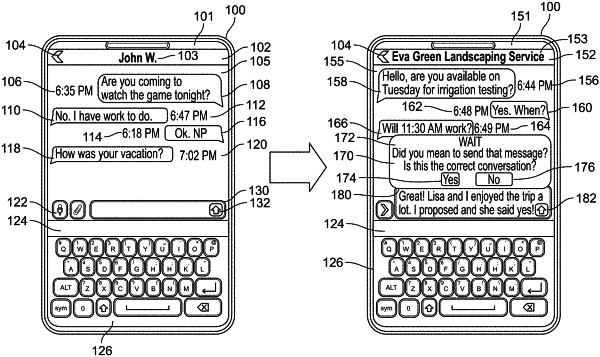| CPC G06F 16/3344 (2019.01) [G06F 16/322 (2019.01); G06F 16/335 (2019.01); H04L 51/046 (2013.01); H04L 51/224 (2022.05)] | 16 Claims |

|
1. A method of determining whether a message should be prevented from being sent to an unintended recipient, the method comprising:
accessing a first conversation with a first recipient, the first conversation comprising messages transmitted via a network to or from the first recipient and first conversation time data;
generating a first context data structure based on content of the first conversation, the first context data structure comprising the first conversation time data;
accessing a second conversation with a second recipient, the second conversation comprising messages transmitted via the network to or from the second recipient, and not transmitted to or from the first recipient, and second conversation time data;
generating a second context data structure based on content of the second conversation, the second context data structure comprising the second conversation time data;
receiving, via input to a user interface, a request to transmit a message via the network to the first recipient, wherein the second recipient is not identified in the request to transmit the message;
determining a first relevance score for the first recipient based on correlating the message with the first context data structure and a first time gap based on the first conversation time data, wherein the first time gap is inversely proportional to the first relevance score;
determining a second relevance score for the second recipient who is not identified in the request to transmit the message based on correlating the message with the second context data structure and a second time gap based on the second conversation time data, wherein the second time gap is inversely proportional to the second relevance score;
determining whether the first relevance score exceeds the second relevance score;
in response to determining that the first relevance score exceeds the second relevance score, allowing transmission via the network of the message to the first recipient; and
in response to determining that the first relevance score does not exceed the second relevance score, preventing transmission over the network of the message to the first recipient and providing an alert via the user interface indicating that the first conversation may not be correct.
|